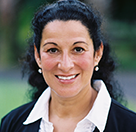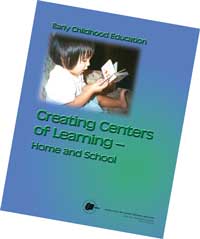• by Rosana G. Rodríguez, Ph.D., and Abelardo Villarreal, Ph.D. • IDRA Newsletter • March 2005




Children benefit in countless ways when parents and teachers work together at the preschool level to deliberately structure home and school environments for learning literacy and for general growth and development. When meaningful partnerships for learning are established between home and school, children’s self-esteem is enhanced and rates, amounts and depths of learning are improved.


Parents should view the home as the first center of learning. With this in mind, families can arrange a home environment to support learning and promote positive growth and development. Part One of the guide is intended for family use in planning such environments. The guide can assist in determining how supportive the home environment is as a “center of learning” and for planning activities to improve learning in the home.
The guide is intended to assist parents in committing greater efforts and actions that will benefit the child in school and beyond. Part One of the guide also contains ideas in the following areas: expectations, reinforcement of learning in language and math literacy, home environment, relationships within the home, and opportunities outside the home.
Part Two is designed to help teachers at the preschool level create dynamic learning centers where children are elevated to excellence in learning, with emphasis on early language and mathematics skills. Ideally, these “centers of excellence” at schools operate in a way to support students acquiring basic skills and competencies in all aspects of literacy, numeracy, science and technology. The guide is designed to help teachers reflect upon and evaluate their classrooms and the school learning environments of young learners.
Where the checklist shows that activity is occurring only “sometimes” or “never,” clearly steps can be taken to raise the bar to excellence. When teachers are pro-active in partnering with the home and in creating centers of learning at school, children learn, they excel, they achieve and they win. Part Two of the guide also contains ideas in the following areas: staffing, educational equity, accountability, teacher expectations, academic achievement, social maturity, classroom management, and parent engagement.
Honoring and preserving home language and cultural traditions is an essential factor in successful home-school relationships at every level, and particularly in the early years.
It has been said that a people without knowledge of their language and culture is like a tree without roots: it cannot thrive over time. Parents, families and communities help to foster the values and culture that sustain a civilization, and are important partners with schools in helping to create self-esteem and a lifelong love for learning.
Therefore, any effective strategy for engagement between school and home must honor, incorporate and aggressively seek out effective means for parents, family and community participation as a key resource for learning, at all levels, from preschool through college. In maintaining quality bilingual and multicultural preschool environments, the home language should be seen as not only an expression of culture, but also, a means to create culture.
IDRA has more than 30 years of shaping new paradigms in designing ways of working with educators and communities to forge strong alliances among schools, colleges and communities. The opportunities and the challenges are there for educational systems and communities to value and empower one another in ways that can result in more inclusive and productive educational settings, increased academic achievement for all students, and positive synergistic relationships that promote growth and well-being across communities. Children thrive and schools gain at every level when they value the role of home and tap into the assets of the community.
To inquire about additional resources to strengthen home and school engagement, visit the IDRA web site (www.idra.org), find out about IDRA’s Community Engagement Toolkit, or call (210-444-1710) to learn more about our training and development opportunities for staff, families and community members.
Rosana G. Rodríguez, Ph.D., is director of the IDRA Division of Community and Public Engagement. Abelardo Villarreal, Ph.D., is director of the IDRA Division of Professional Development. Comments and questions may be directed to them via e-mail at feedback@idra.org.
[©2005, IDRA. This article originally appeared in the March 2005 IDRA Newsletter by the Intercultural Development Research Association. Permission to reproduce this article is granted provided the article is reprinted in its entirety and proper credit is given to IDRA and the author.]


